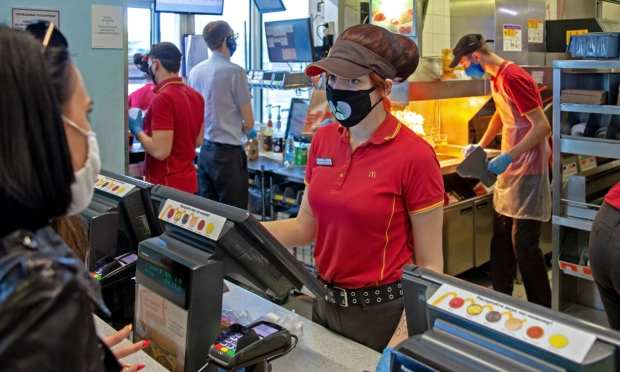McDonald’s, Starbucks And Other QSRs Say Dining Rooms Follow Safety Standards As COVID Cases Rise

Major restaurant chains, including McDonald’s, Starbucks and others, are looking for ways to keep dining rooms open — even as health authorities caution that other ways of buying restaurant meals remain safer, The Wall Street Journal (WSJ) reported.
Restaurant executives are optimistic they can make indoor dining work in a number of situations because eateries have honed protocols for maintaining environments that conform with regulations designed to counter COVID-19.
Management’s enthusiasm for dining rooms is easy to understand.
The NPD Group reported last month: “Restaurant dining, aside from drive-thru, carryout and delivery, was turned on end by governmental mandates and restrictions during the pandemic. Visits to full-service restaurants, which are primarily on-premises operations, declined nearly 80 percent during the height of the mandated dine-in closures. Quick-service restaurants, already set up for drive-thru, carryout and delivery, realized double-digit declines as well but not as steep as full-service restaurants.”
WSJ cited data from OpenTable that showed reservations for seats in restaurants are off in recent weeks as much as 40 percent in Florida and nearly 80 percent in Illinois.
“When we opened the cafe for limited seating, the response is immediate,” Starbucks CEO Kevin Johnson said, according to WSJ.
The standards for opening dining rooms varies by company, WSJ reported.
U.S. McDonald’s franchisees have been told they can reopen dining rooms when cases in a restaurant’s area fall for three weeks in a row, WSJ reported.
Some chains, like Wingstop, are keeping dining rooms closed rather than having to continually respond to changing events, WSJ reported.
Bloomin’ Brands is installing equipment to make dining indoors safer, and CEO Donald Deno told WSJ: “I don’t mean to make light of things, but they love coming back into our businesses and enjoy eating out.”
WSJ reported that operators say keeping dining rooms open becomes more important to their businesses as temperatures fall across much of the U.S., making outdoor spaces that helped sales in the summer less tenable.
The health challenges, however, are only getting starker.
The U.S. Centers for Disease Control and Prevention (CDC) reported in September that people who visited hospitals on an outpatient basis with COVID-19 were more likely than people without COVID-19 to have dined in a restaurant during the relevant time period.
An early November study in the United Kingdom found that Britain’s program of subsidizing restaurant patronage as a way of muting the economic impact of COVID-19 may have led the disease to spread faster.
In an event that has become increasingly common, a well-known restaurant chain — in this case, Friendly’s — filed for bankruptcy earlier this month. The company indicated it hoped to have a reorganization plan approved by the bankruptcy court by mid-December.
